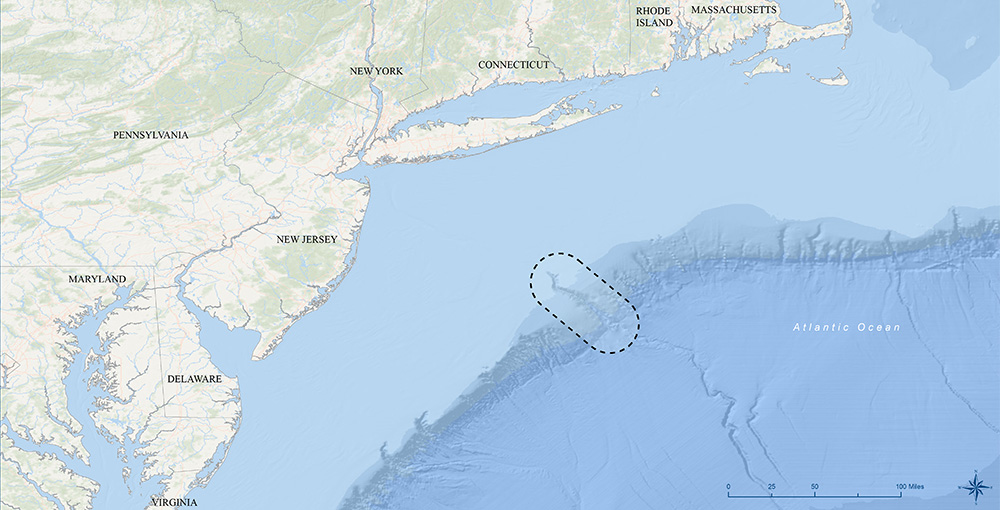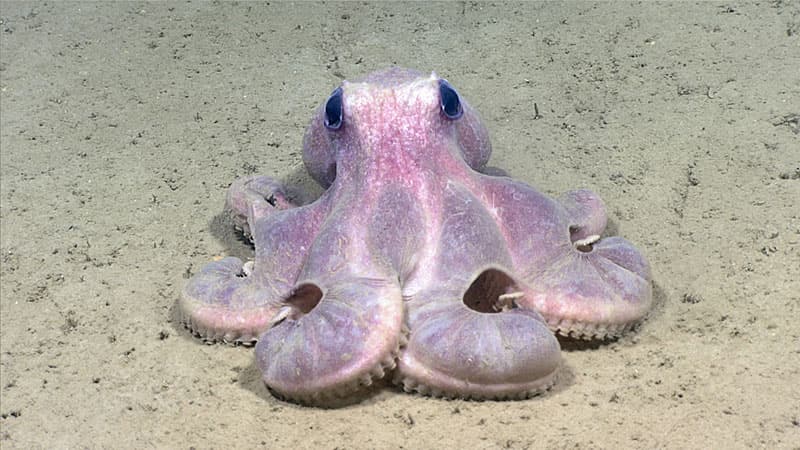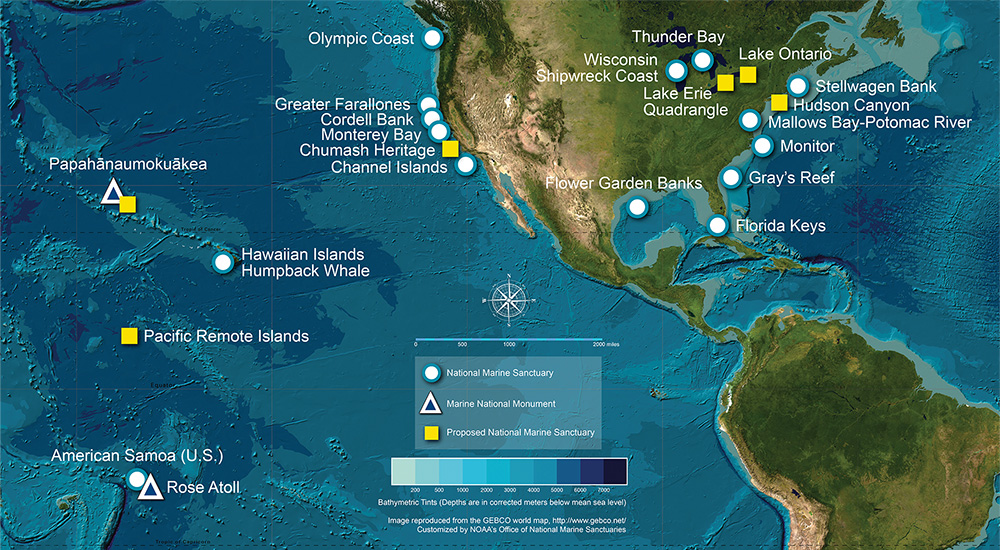NOAA's Office of National Marine Sanctuaries is in the early stages of the process to designate a new national marine sanctuary off the coast of New York and New Jersey. A sanctuary in the Hudson Canyon area would enable NOAA to cultivate new partnerships and connect diverse communities in the Mid-Atlantic region to build awareness of ocean conservation and sustainable use. NOAA started the sanctuary designation process in June 2022.
About the Area Under Consideration
Hudson Canyon is the largest submarine canyon along the U.S. Atlantic coast and is one of the largest in the world. Beginning approximately 100 miles southeast of New York City, the canyon extends about 350 miles seaward, reaches depths of 2 to 2.5 miles, and is up to 7.5 miles wide. Hudson Canyon's grand scale and diverse structure—steep slopes, firm outcrops, diverse sediments, flux of nutrients, and areas of upwelling—make it an ecological hotspot for a vast array of marine wildlife.

Hudson Canyon provides habitat for a range of protected and sensitive species, including sperm whales, sea turtles, and deep-sea corals. The area's rich biodiversity is integral to the regional economy, underpinning commercial and recreational fisheries, recreational diving, whale watching, and birding. Hudson Canyon could also serve as a sentinel site for NOAA to monitor the impacts of climate change on submarine canyons, which are vulnerable to the effects of ocean acidification and oxygen depletion.

The waters surrounding Hudson Canyon also hold historical and cultural importance to those living along its shores in New York and New Jersey. The ancestors of the Indigenous communities in this area have inhabited the region for more than 10,000 years and have relied upon the natural resources of Hudson Canyon. There are also several shipwrecks in the nominated area, with some dating to the mid-19th Century.
The primary goals of the proposed national marine sanctuary designation are to 1) support conservation of the area's marine wildlife, habitats, and maritime cultural resources, 2) work closely with Indigenous tribes and nations to identify and raise awareness of Indigenous connections to the area, 3) highlight and promote sustainable uses of the area, 4) expand ocean science and monitoring in, and education and awareness of the area, and 5) provide a platform for collaborative and diverse partnerships that support effective and inclusive long-term management of the area.

The Designation Process
NOAA initiated the sanctuary designation process for the proposed Hudson Canyon National Marine Sanctuary on June 8, 2022, when it published a notice of intent to begin the process and solicited public comment. NOAA received over 17,000 comments during the public comment period, June 8 to August 8, 2022. The Hudson Canyon team is using the comments NOAA received to develop a proposed sanctuary management plan, draft environmental impact statement, proposed rule and proposed sanctuary boundaries. NOAA will publish the draft designation documents, including a public comment period, and will consider public input before making a final decision.
Public Scoping
June 2022 -- August 2022
- Virtual public meetings held June 23, 2022 and August 3, 2022
- In-person public meetings held July 19, 2022, and July 21, 2022
- Electronic public comments submitted through the Federal eRulemaking Portal, www.regulations.gov, to docket number NOAA-NOS-2022-0053.
- Written public comments mailed to NOAA Sanctuaries Eastern Regional Office.
Current Step
Review of Public Comments and Preparation of Draft Documents
ONMS staff review all public comments submitted during the scoping period and produce a draft management plan, draft environmental impact statement, proposed regulations and proposed boundaries.
Release Draft Designation Documents and Provide for Public Comment Period
Target: Late Summer/Fall 2024
NOAA solicits public review and comment on the draft designation documents.
Prepare Final Designation Documents
Target: Spring 2025
NOAA will again consider all public comments received on the draft designation documents before finalizing the sanctuary’s designation and producing final designation documents.
Publish Final Designation Documents
Target: Late 2025
Sanctuary Designation
Target: 2026
NOAA's National Marine Sanctuary System
NOAA's Office of National Marine Sanctuaries serves as the trustee for a network of underwater parks encompassing more than 620,000 square miles of marine and Great Lakes waters from Washington state to the Florida Keys, and from Lake Huron to American Samoa. The network includes a system of 15 national marine sanctuaries and Papahānaumokuākea and Rose Atoll marine national monuments. Through the National Marine Sanctuaries Act, NOAA can identify, designate, and protect areas of the marine and Great Lakes environment that have special national significance.


